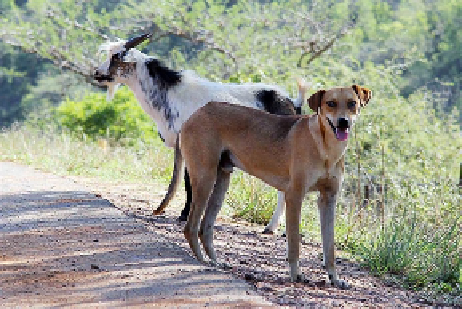Biology Reference
In-Depth Information
select for them, nor did he desire them as outcomes, nor are there known phy-
logenetic homologs. As
Bemis (1984)
noted, “
the observation of evolu-
tionary change by itself is insufficient evidence that adaptation actually
occurred.” For “adaptation,” one could also read “selection.” The fact that
dogs have a diestrous cycle is not evidence that people selected for it.
In a sense, then, it is reasonable to argue that the domestic dog is adapted
in the evolutionary sense to the energetics of a village scavenger and, along
with the genetic changes for reduced flight distance, acquired several observ-
able diagnostic features, saltations with no known adaptive value.
...
Livestock-Guarding Dogs
Ecology
Livestock-guarding dogs are the most common working dog in the world.
It is hard to find a pastoral community without them. The reason is simple—
they are village dogs that are associated with pastoral cultures. Dogs living
in pastoral communities socially bond with the livestock during early devel-
opment and display dog-specific behaviors to that stock. Technically they
are not breeds but rather landraces, since no pre-zygotic selection has taken
place. However, in the last 75 years small samples taken from several pasto-
ral regions (e.g., in France, Hungary, and Turkey), have been registered with
national kennel clubs as breeds in the U.S. and Europe.
In Turkey we observed dogs in remote villages in which the people are
pastoralists. They depend on sheep (and other livestock) for a large portion
of their food and fiber. Dogs accompany transhumance migrations and live
among the sheep continuously. Dogs which attend to livestock in this way
are called livestock-guarding dogs (
Coppinger et al., 1983; Dawydiak and
Sims, 2004; Landry, 2001; Rigg, 2001
).
FIGURE 6.2
Zulu village dog, which has developed a social bond with goats. Photo credit:
Daniel Stewart





Search WWH ::

Custom Search